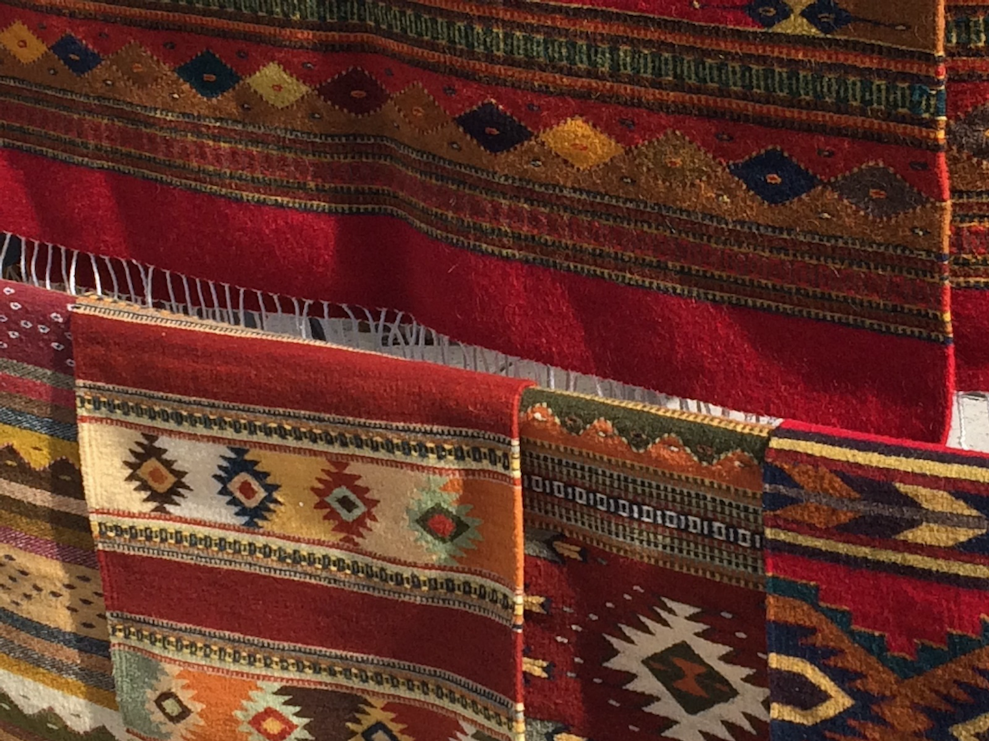The Art Of Rug Making

Rug making is an ancient art and its roots can be traced back 4000 years. The oldest known rug in the world the Pazyryk rug discovered in 1949 can be dated back to 5th century BC.
This ancient art has been passed down through generations and with time has emerged as one of the most successful cottage industry of present times. With the advent of technology, the techniques have developed and been modified to make the process simpler and faster. However, the age-old weaving skills passed down through the years remain intact and their market thrives as ever.
The Pazyryk Rug dating back to 5th century BC

Originally from en.wikipedia; description page is/was here; [1]., Public Domain, https://commons.wikimedia.org/w/index.php?curid=2251888
Hand-Knotted Rugs
A close up of a hand-knotted rug
Over time rugs came to be associated with luxury and would be the essential feature from elite households to royal courts. Hand-knotted rugs flourished in Iran during the 17th century and were popularly termed as Persian rugs – as we know them today. Another famous hand-knotted rug type – the Oriental rug is said to have been developed by nomadic tribes of Central Asia.

By http://commons.wikimedia.org/wiki/User:Ryj - http://commons.wikimedia.org/wiki/File:Kette_und_Schu%C3%9F.jpg, CC BY-SA 3.0, https://en.wikipedia.org/w/index.php?curid=37702470
Hand-knotted rugs are made on wooden looms which are set up by creating a network of threads – the vertical threads are known as warp and the horizontal threads are known as weft. Individual strands of the yarn are tied into a knot around the warp. After each line, a comb is used to press the knots down and pack them tightly together. The weft holds the rug together. The fringe of the rug is made by leaving the ends of the warp loose. The entire rug is created in such a way by tying every knot manually. The speed and skill of the weaver determine how many knots he or she can tie in a minute. According to the design or geographic location, several different types of knots are used like the Turkish knot, Persian knot or the Oriental knot.
A representation of the Turkish knot

CC BY-SA 2.5, https://commons.wikimedia.org/w/index.php?curid=810376
A representation of the Persian knot

CC BY-SA 2.5, https://commons.wikimedia.org/w/index.php?curid=810379
Since every knot is tied by hand, the details of the design that can be achieved in a hand-knotted rug are unsurpassed. It is also a highly time consuming and painstaking affair which leads to these rugs being of extremely high value.
The no of knots per square inch can be varied based on the complexity of the design. The more complex the design the higher no of knots per square inch. Hand-knotted rugs can last for generations and are easy to clean as they are washable.
View our Hand knotted Collection
Hand Tufted Rugs
A Hand Tufted rug in production

Hand Tufting is more recently developed as compared to the age-old hand-knotting technique. The process makes use of a hand-operated tool. It is a relatively quick and efficient process. Vast designs can be easily and efficiently created using the hand tufting technique.
The hand tufting process involves the design of the rug to be transferred on to a piece of cloth known as the backing material. This backing material is then set up on a loom. The yarn is threaded through the tufting tool often called a hand tufting gun. This yarn is then punched through the backing material forming a loop with the help of the tufting gun. Lines are made along with the printed pattern on the backing material. The loops are then cut to form the pile. Variations may be achieved in the tufting process by leaving the loops as it is or creating a combination rug of the loop and cut pile.
An image of backing material with printed design and a hand tufting gun

Once the entire rug has been tufted, it is taken off the loom and another backing is applied to the back commonly known as third backing. This helps to keep the tufts secure. The tufts are then sheared to a uniform height as required with the help of a shearing machine. If varying pile heights are required then the shearing is done using handheld tools.
If well cared for hand-tufted rugs can easily last up to 15-20 years.
View our Hand Tufted Collection
Flatweave Rugs
Flatweave rugs are commonly known as ‘Dhurries’ in India

Flatweave rugs are termed such as they have no pile and they lie flat on the ground. The construction of flatweave rugs is similar to hand-knotted rugs. The loom is set up with the warp and weft threads. However, unlike hand-knotted rugs where the yarn is tied into knots, in flatweaves, the yarn is woven in a continuous strand resulting in a rug tightly woven together. Flatweave rugs are generally reversible and lightweight. Based on the geographic location the terminology may vary and the technique may differ slightly. In India flatweaves are commonly known as Dhurries, in Turkey, they are referred to as Kilims.
Dhurries come in a variety of designs and bright cheerful colours. The prints may range from tribal to geometric. These lightweight rugs are highly durable and can last for years. They are washable and hence easy to clean.
At Rug Artisan you can choose from any of the rug types and browse thousands of designs and customise them to your need. With Rug Artisan, being a Goodweave certified company, you can also be sure, that no malpractice or child labour was used





